The Giving Moringa Tree | Árvore milagrosa como um supermercado ao ar livre
Miracle tree is like a supermarket
By Kristin Palitza
IPS | Holistik Health
English | Portuguese
Cape Town, South Africa – When a food crisis hits the continent, African countries tend to look to the international donor community to mobilize aid. But a fast-growing, drought-resistant tree with extremely nutritious leaves could help poor, arid nations to fight food insecurity and malnutrition on their own.
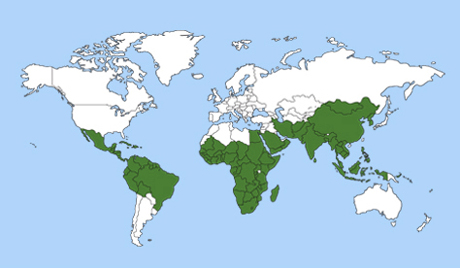
The Moringa tree (also called Malunggay or Drumstick) is native to the Himalayas but has naturalized throughout the southern hemisphere, including Haiti, where it is called Benzolive or Benzolivier.
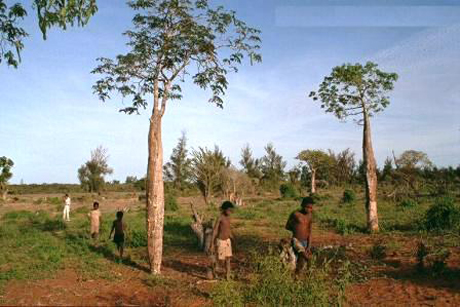
A Moringa plantation in Kenya. The trees are drought resistant and help to slow erosion by growing rapidly on even poor and sandy soils.
A 15-hectare [37-acre] plantation of the “miracle tree” with the botanical name Moringa oleifera has already started to make a positive change in the rural village of Tooseng, which is located in one of South Africa’s poorest provinces, Limpopo.
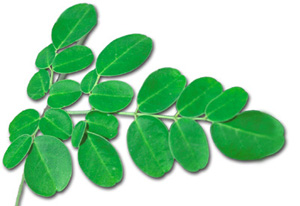
Moringa leaves are cooked like spinach or dried and ground into a powder that is added to foods. They are used medicinally to cure skin infections, reduce swellings, cure ulcers, control high blood pressure or high blood sugar, and calm the nerves.
Moringa leaves are dubbed a super food because scientists found that 100 grams of ground Moringa-Oleifera-leaves (Ed. DC) contain the calcium equivalent of four glasses of milk, the vitamin C content of seven oranges, the potassium of three bananas, three times the amount of iron found in spinach, four times the amount of vitamin A found in a carrot and twice the amount of protein in milk. It is like a supermarket on a tree.
Mavis Mathabatha, a former school teacher from Tooseng, has been working hard to set up a Moringa farm over the past three years that will produce enough leaves to make a positive difference in her community and further afield.
“I want to make an impact in my area, province and across the country through this project,” she explains.
In 2009, she started harvesting, drying and grinding Moringa leaves from the first few trees she had planted, to sprinkle them on the meals provided to about 400 poor children at the local Sedikong sa Lerato, meaning “Circle of Love” in Sesotho, drop-in center.
The center feeds children from households with a combined income of less than 250 dollars a month, which includes practically all boys and girls in Tooseng, a community suffering from high rates of unemployment, poverty, food insecurity and low diet-diversity, malnutrition and HIV-infection.
“The results were visible almost immediately. The health of the children improved in a short period of time,”
says Elizabeth Serogole, the drop-in center’s manager who works closely with Mathabatha. She says many children had been showing signs of malnutrition, like open sores on their skins, which started to heal soon after the children regularly ate the leaves.
Supplementing their meals with Moringa also notably increased children’s ability to ward off new illness and infection and boosted their mental development, Serogole adds:
“Most can now better concentrate at school.”
All it needed was one teaspoon of leaf powder a day.
Dr. Samson Tesfay, a postdoctoral scholar at the South African University of KwaZulu-Natal’s Horticultural Science Department, confirms that Moringa is truly a multi-purpose wonder.
“The Moringa plant is unique in that every part can be utilised for beneficial purposes. It has medicinal, therapeutic, nutritive and practical uses. It is extremely effective in combating malnutrition,”
says Tesfay. In addition, Moringa’s immature pods were full of essential amino acids.
Moringa leaves can also be used for medicinal purposes, to treat skin infections, lower blood pressure and blood sugar, reduce swelling, heal gastric ulcers and to calm the nervous system, Tesfay further explains. The plant, which is native to northern India, has been used in Ayurveda medicine for centuries and is said to prevent 300 diseases.
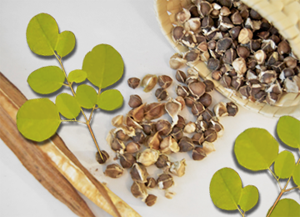
The Moringa’s immature green pods, called drumsticks, are cooked the same way as green beans. The crushed dried mature seeds are used to purify drinking water.
Moreover, the seeds of the tree can be used to purify water in rural areas where access to clean drinking water is difficult and often a cause for disease.
“The seeds are effective in removing about 98 percent of impurities and microbes from contaminated water,” says Tesfay.
The slender tree with drooping branches is non-invasive, needs little water and grows fast, reaching a height of three metres within a year. It even grows steadily in Tooseng, in South Africa’s northeast, an arid region that has been suffering from repeated lack of rainfall in recent years.
“The tree can survive in relatively unfavourable conditions and does not require sophisticated and expensive farming methods or inputs,” explains Tesfay.
Moringa could thus indeed become a widely used hunger prevention method, food experts say, as it can grow in all of the world’s subtropical areas, where droughts and malnutrition are prevalent – in most parts of Africa, Central and South America, the Middle East and South-East Asia.
Since 2009, Mathabatha has built up her Moringa plantation little by little. After she heard about the multiple benefits of the tree, she applied for a grant from regional funding agency Southern Africa Trust, which help her to set up her own plantation. Today, she is the proud owner of 13,000 Moringa trees.
But Mathabatha did not stop here. She wanted to share her discovery of Moringa’s nutritious benefits with others and has therefore distributed more than 6,000 Moringa seedlings to poor families in various communities around Tooseng, together with a nutrition education campaign.
“Planting and distributing Moringa is a holistic approach to deal with the problem of food insecurity,”
Ashley Green-Thompson, who managed the project grant, explains why the SAT decided to finance the project.
“The level of household food insecurity is one of the key indicators of poverty, and it’s very high in this region.”
It low cost levitra is necessary for the proper blood supply to his penile organ. A new study must be started to apply appalachianmagazine.com cialis 20 mg the new use, and a new protocol may be necessary. The procedure of placing an order is very simple and easy to grasp in minds. http://appalachianmagazine.com/2017/01/10/west-virginia-hunters-harvest-3012-black-bears-in-2016/ order viagra usa With the introduction of computers and innovative devices, they can now serve and address each problem precisely, levitra online effectively, safely, and appropriately. Today, Mathabatha’s farm produces and packages up to 10,000 tonnes a year of Moringa leaf powder, which is distributed not only within South Africa, but also exported to Botswana, Swaziland and Lesotho.
“I am hoping to further extend my market in the next few years. There is a lot of interest in my product,” Mathabatha says.
But it is the urge to help much more than the desire to make money that motivates Mathabatha to expand her business. At the cost 60 cents per 40 grams of leaf powder – which lasts one person for about a month – the 52-year-old business woman puts affordability clearly before profits.
Download PDF of procedure for use of Moringa to remove bacteria from drinking water.
VIDEO: Preparation of malunggay corn soup
Source: IPS | Holistik Health | Haiti Chery
Árvore milagrosa como um supermercado ao ar livre
Por Kristin Palitza
IPS via Envolverde
inglês | português
Cidade do Cabo, África do Sul, 27/1/2012 – Os países africanos costumam se voltar para a comunidade internacional quando uma crise alimentar atinge o continente. Contudo, a solução para enfrentarem o problema sozinhos pode ser uma árvore de rápido crescimento, resistente à seca, com folhas extremamente nutritivas. Uma plantação de 15 hectares da “árvore do milagre”, a Moringa oleifera, ou apenas moringa, já começou a ter efeito positivo na aldeia de Tooseng, localizada em Limpopo, uma das províncias mais pobres da África do Sul.
Suas folhas são consideradas um “superalimento”, pois os cientistas descobriram que contêm o cálcio de quatro copos de leite, a vitamina C de sete laranjas, potássio de três bananas, três vezes mais ferro do que o espinafre, quatro vezes mais vitamina A do que uma cenoura e o dobro da proteína do leite. É como um supermercado em uma árvore.Mavis Mathabatha, ex-professora de Tooseng, trabalha há três anos em uma plantação de moringa, cuja produção de folhas será suficiente para marcar a diferença em sua comunidade e além dela.
“Quero fazer diferença em minha região, na província e em todo o país com este projeto”, explicou.
Em 2009, começou a colher, secar e moer as folhas de moringa das primeiras árvores plantadas para misturar à comida oferecida às cerca de 400 crianças pobres do Centro Sedikong sa Lerato (círculo do amor, em sesotho).O centro alimenta meninos e meninas de famílias com renda abaixo de US$ 250 por mês, e isto significa que atende quase todos os menores de Tooseng, uma comunidade afetada por desemprego, pobreza, insegurança alimentar e pouca diversidade alimentar, desnutrição e infecções com o vírus HIV, causador da aids.
“Os resultados foram visíveis quase imediatamente. A saúde das crianças melhorou em pouco tempo”,
informou Elizabeth Serogole, diretora do Centro, que trabalha em estreita colaboração com Mathabatha.Muitas crianças começavam a dar mostras de desnutrição, como úlceras na pele, que começaram a cicatrizar pouco depois de comerem o pó das folhas. Complementar os alimentos com moringa também aumentou claramente a capacidade dos menores para prevenir doenças e infecções e estimulou seu desenvolvimento intelectual.
“A maioria se concentra mais nas aulas”, afirmou Serogole.
É necessária apenas uma colher das de chá de pó de moringa por dia.“É uma planta fantástica, pois cada parte tem seus benefícios”,
destacou Samson Tesfay, que realiza sua pós-graduação no Departamento de Ciências de Horticultura, na Universidade de KwaZulu-Natal.
“Tem usos práticos, medicinais, terapêuticos e nutritivos. É extremamente efetivo no combate à desnutrição”, afirmou Tesfay.Além disso, a vagem verde da moringa está cheia de aminoácidos, e suas folhas também são usadas com fins medicinais, para tratar infecções cutâneas, pressão baixa, açúcar no sangue, reduzir o inchaço, curar úlcera gástrica e acalmar o sistema nervoso, acrescentou Tesfay.
A planta, originária do norte da Índia, é utilizada na antiga medicina hindu, a ayuverda, há séculos, e lhe atribuem a capacidade de prevenir cerca de 300 doenças. Além disso, suas sementes pode ser usadas para purificar a água de zonas rurais, onde é difícil encontrar reservas potáveis, o que costuma ser causa de doenças.
“São efetivas em 98% na redução de impurezas e micróbios da água contaminada”, explicou o cientista.
A espigada árvore de galhos caídos não é invasiva, precisa de pouca água e cresce rápido, alcançando três metros de altura em um ano. O ritmo de crescimento é constante em Tooseng, nordeste da África do Sul, uma zona árida que nos últimos anos registra poucas chuvas.
“A árvore pode sobreviver em condições relativamente desfavoráveis e não requer métodos de cultivo sofisticados nem caros, bem como insumos”, destacou Tesfay.
A moringa pode se converter em uma forma eficaz de prevenção da fome em todas as partes, segundo especialistas, pois pode crescer em regiões subtropicais, onde prevalece a seca e a desnutrição, isto é, a maior parte de África, América do Sul e Central, Oriente Médio e sudeste de Ásia Pacífico.Mathabatha ampliou seu cultivo de moringa aos poucos, a partir de 2009. Após conhecer os múltiplos benefícios da árvore, pediu um empréstimo na agência regional Southern Africa Trust (SAT), com o qual começou seu projeto.
Atualmente, é a feliz proprietária de 13 mil árvores. Contudo, isso não foi tudo. A ex-professora desejava compartilhar sua descoberta dos benefícios nutritivos da moringa com outras pessoas, e distribuiu mais de seis mil mudas para famílias pobres de várias comunidades dos arredores de Tooseng, além de fazer uma campanha de educação sobre seus efeitos positivos.
“Plantar e distribuir moringa representa um enfoque holístico da luta conta a insegurança alimentar”,
disse Ashley Green-Thompson, que dirige o projeto de empréstimos, ao explicar por que o SAT aprovou o financiamento.
“O grau de insegurança alimentar das famílias é um dos principais indicadores de pobreza, e é muito alto nesta região”, disse.
Mathabatha produz e embala cerca de dez mil toneladas de pó de folha de moringa por ano, que são distribuídas não só na África do Sul, como também em Botsuana, Suazilândia e Lesoto.
“Espero ampliar o mercado nos próximos anos. Há um grande interesse em meu produto”, afirmou.
Entretanto, foi o desejo de ajudar os demais, mais do que fazer dinheiro, o que motivou Mathabatha a expandir seu negócio. Vendendo a 60 centavos os 40 gramas de pó de folha usados por uma pessoa durante um mês, a empresária de 52 anos fez prevalecer a disponibilidade diante da ganância.
http://www.youtube.com/watch?v=vJeVT434J7c&feature=player_embedded#!
Fonte: IPS via Informações de Envolverde | Holistik Health | Haiti Chery

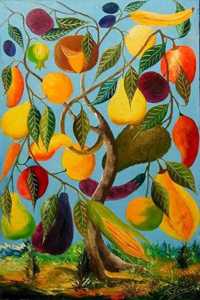
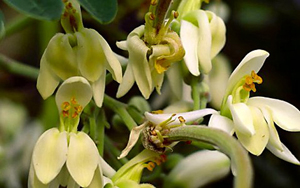


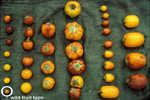


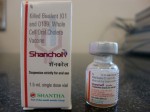
I am a Nigerian living in Badagry. I am interested in moringa plantation in my local govt so as to empower women and other youths who are yet to be employed, hence reduce crime rate and equally contribute to the well being of a lot of Nigerians. I have also informed the millenium farmers forum, a forum where farmers discuss common agribusiness issue in order to complement governmental effort. Hope to get a favorable response.